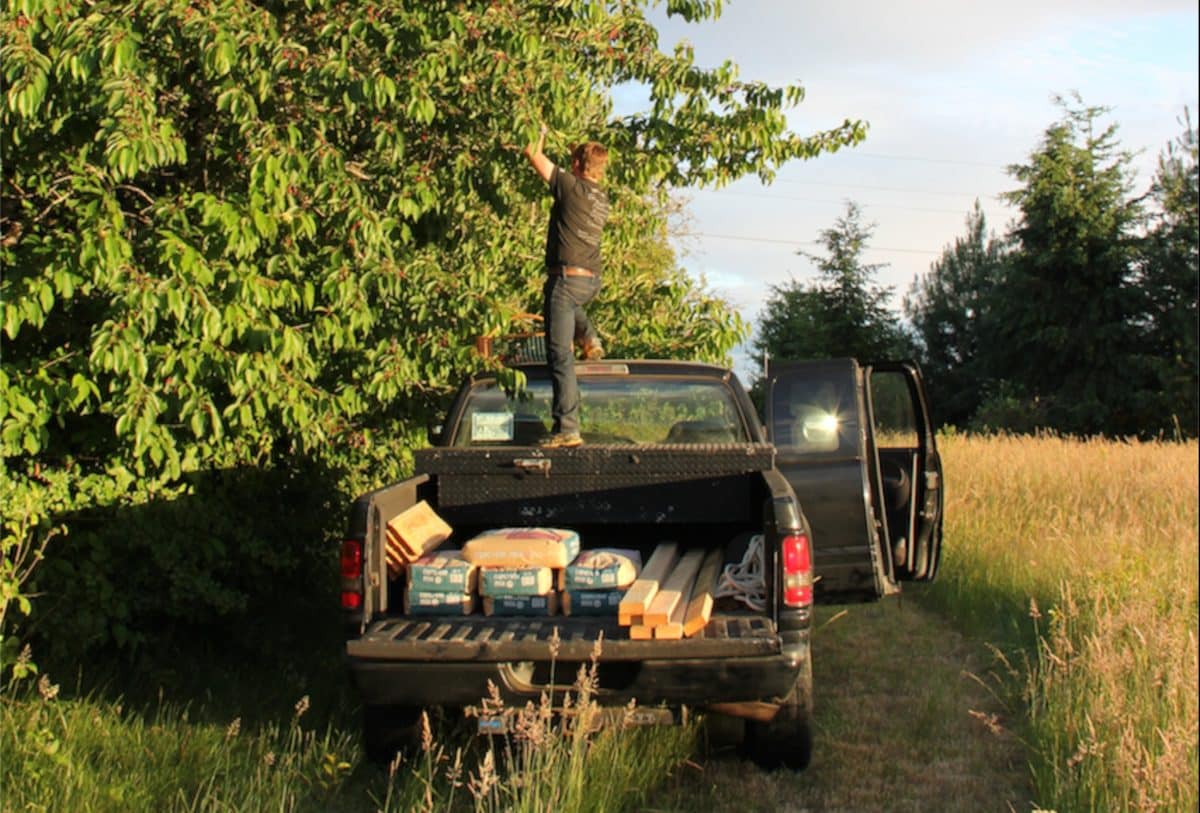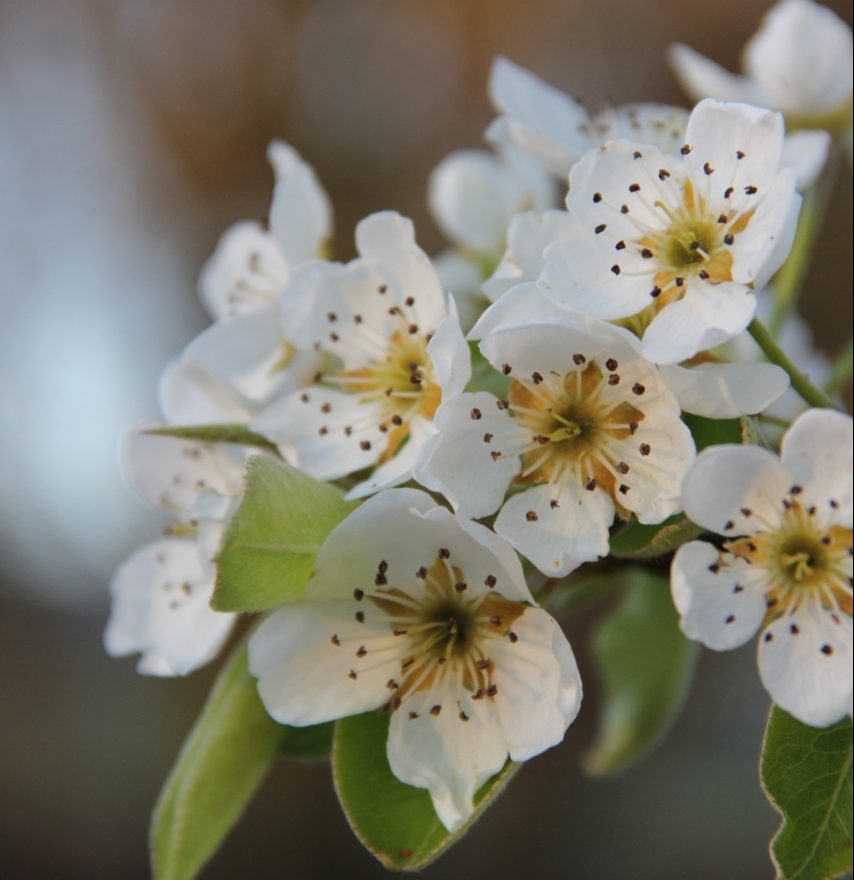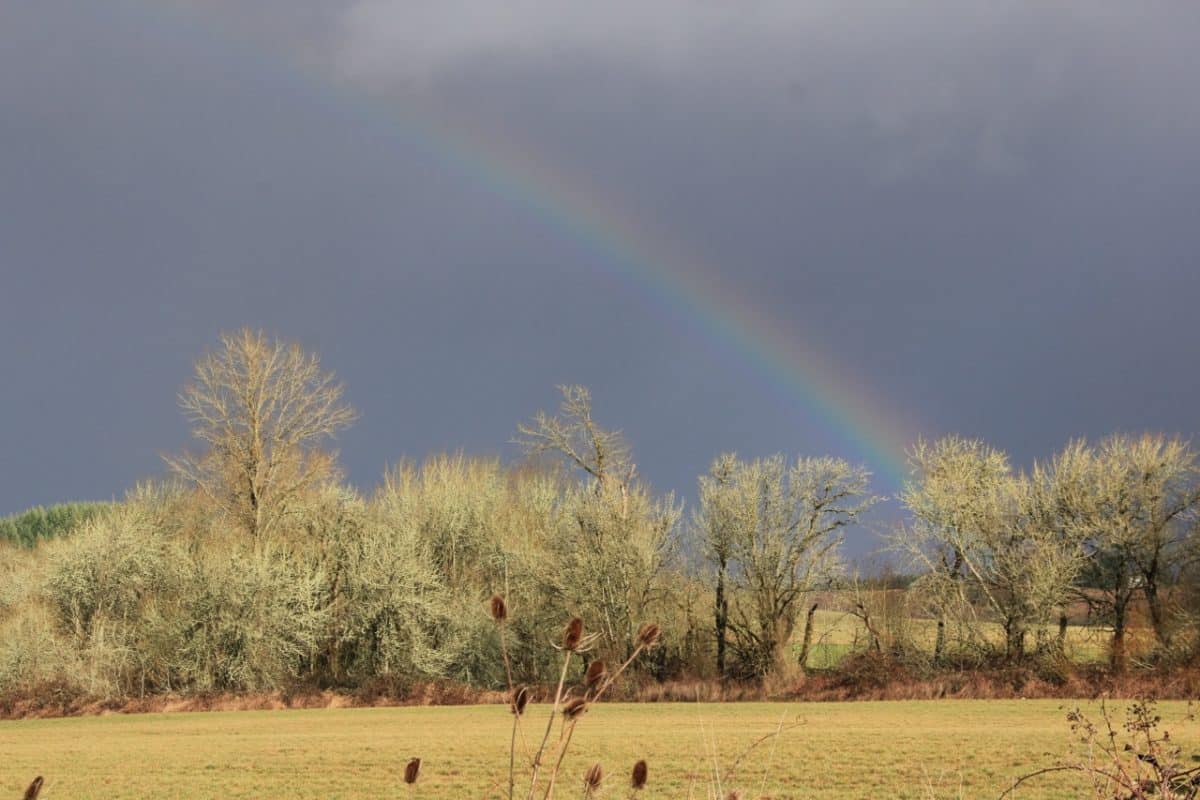While North Carolina, where we came from, seems already in the wicked throes of a hot summer, our new home of Sheridan, Oregon, is just tip-toeing into spring. Like ballerinas en pointe, we prance through the warm days and then come to a full stop, heels down, when nights return to the 40’s. A stretch of three warm days lulls us into thinking that it’s time to start shopping for window AC units and then the clouds gather in all the green nooks and crannies between the hills nearby, the wind musters, and we smell salt and cold come rushing at us in a huge exhale from the ocean.
In moving to Oregon, we quadrupled the size of our North Carolina farm. Sixty-five acres now beckon from every corner and demand nearly daily attention. In addition to an aging home and several outbuildings, we inherited billowing apple and pear trees, neither of which we know the type, plus twelve young fruit trees, three grape vines, and two beds of strawberries. We already have thirteen new chickens and have been blessed with yet another stray cat. Vegetables have had to take a back seat while we renovate; fences must be repaired, rebuilt, torn down, or power-washed along with the interiors and exteriors of several thousand square feet of buildings. Fruit trees have to be clambered upon and pruned; netting had to go up to protect the strawberries from birds and other pests. Mowing at least five acres happened every week up until very recently, when the rain slacked off a bit, giving us a chance to catch up on the weed-whacking of the same five acres.

We arrived in caravan to these hills on March 1st; everything we owned was either moved for us as a parting gift from the US Army for my husband’s thirteen years of service, or piled into spaces between the dog, the horse, ourselves and two cats. Of the large raised North Carolina gardens we had nothing and I kept a single, tiny lemon tree nestled on the floor board of the truck. It froze to near-death on the Nebraska-Wyoming border and its glossy leaves turned brown, shriveled, and fell away. Still, lofty dreams of beginning again with vibrant, crunchy lettuces and beets pregnant with red and yellow pigment — ready to stain our fingers and cutting board — remained a constant as we slept every night on an air mattress and waited for our home to catch up with us. And finally it did, on a bright, apple blossom day. Like the clouds, boxes were piled high, wedged into every available crevice. We signed papers, snapped pictures, and began the first of many challenges: unpacking and settling in.

Now that we’re thoroughly moved-in, every morning presents new challenges; we find that making lists of chores to be accomplished each day helps keep those challenges manageable. Our greatest asset is the community we moved into. The process of our education starts and ends with asking questions of the folks who live in the small towns of the Willamette Valley; they share information freely and enthusiastically, though some of the obstacles that we’ve encountered largely involve the local people who are a little cautious about the “foreigners” that moved in on the corner. We’ve learned about old grudges involving the commercial timber that stands on our property in place of the wheat that used to be cooperatively farmed here, and that the small-time farmer we’d imagined could hay our relatively small amount of acreage is an extinct creature from another time. A wait-and-see attitude has had to be adopted by us as we send out thinly veiled SOS’s, hints dropped into conversations with people who have made a living from this land in the hopes that they might take pity on our poor, mostly Oregon-ignorant souls. Fortunately, they usually do.
Oregon is a paradise for those who want to make a life from the land, but the pace with which things grow creates little time for a slow learner like me. I learned (too late) about apple scab, a fungus that comes with wet weather, and that it must be treated for in winter, not late spring; likewise, leaf curl present in peaches requires multiple sprayings through the year. I haven’t even gotten around to exploring organic methods for making the most of what we’ve been gifted.

Along with the fruits, berries and wines this region is noted for, The Willamette Valley has a unique Mediterranean climate that is beginning to propel new and diverse agriculture. Though rainy and damp through the winter, the valley experiences dry, moderate summers. We’ve considered planting hazelnut trees with their roots impregnated with black truffle spores, with the hopes of a good crop of those almighty fungi in five to eight years. At a vineyard recently, we were informed that our property would be ideal territory for a grove of olive trees, and that we could join the growing market for Oregon olive oil. Who knew? Honey production is an even newer goal, with some ten thousand or so bees and their one little hive that we picked up and delivered to our smallest, most sheltered pasture late in the evening so they wouldn’t be tempted to fly home to the blueberry patch from whence they came. Another fooldhardy enterprise, to be sure, but with help from the experts at GloryBee in Eugene, Oregon, and their infinite patience with my infinite number of questions, it’s a good bet that we’ll have honey this year.
With so many opportunities, it is proving difficult to remain focused. But we’ve asked ourselves more times than we can count: why not? More than the actual climate, the overall Oregon sense of the right-ness of eating well, locally, and resourcefully has fueled our choices. Hunting and fishing have always been part of our food ways, but, little by little, we add new paths to the map. Our first is to cultivate what we have been given on this land, rather than arriving with grand ideas of what it should be or what it should produce for us. This year will be spent carefully tending and watching as we learn the seasons and adjust our diet to reflect what’s available. By exploring all that Oregon agriculture has to offer we accomplish the forging of a new path or connection almost every day. Seeking out knowledge nourishes us.
And the little lemon tree? It’s alive and growing well in its rotund, olive-green pot. Well-fed and getting plenty of sunlight on the sunny mud room steps, it’s found the perfect place to thrive. ![]()
First published August 2014
